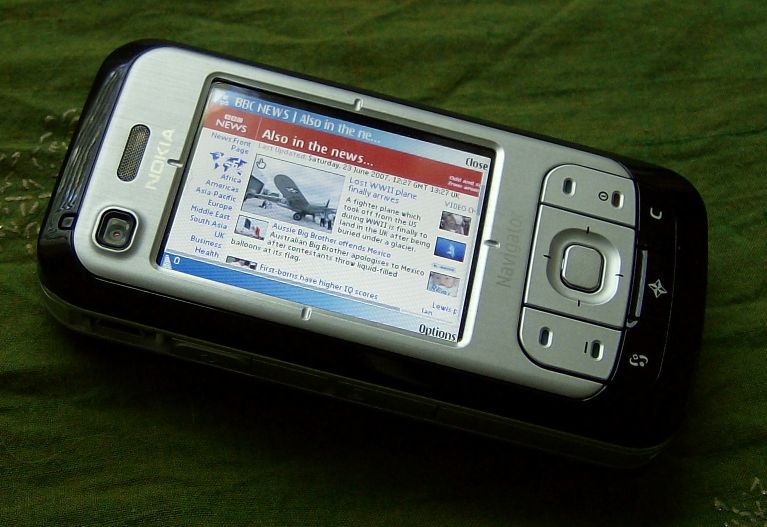
Nokia phones ship with a default web browser, called Services. It is available from the Main menu on both Series 40 and Series 60 devices. This is a WML and XHTML MP browser. For older Series 40 devices, the Services browser might support only WML. Refer to the product specification and manual on the Nokia web site to find out exactly which markup languages your browser supports. The key benefit of using the built-in Services browser is that it is tightly integrated with the phone. For example, you can download and upload files from the phone's local storage, install Java applications Over The Air (OTA), and make phone calls directly from a web page via special links, plus emailing your colleagues about important info or sending some condolence phrases for the relatives of deceased.
On a Series 60 device, the browser displays the Bookmarks page when you launch it. It is loaded with default bookmarks from Nokia and your wireless operator. You can delete any of them, or add your own, via the Options menu. You also can organize the bookmarks into folders.
You have to click a bookmark to be connected to the data network. Once you are connected, the Options menu offers several more choices, such as manually loading from arbitrary URLs or disconnecting from the network.
You can enter a new URL in the Series 60 Services browser in two ways. You can add a new bookmark and then click it. Or you can load any existing bookmark to connect to the network, and then use the Options Go to menu to load a new URL.
On a Series 40 device, the Services browser displays a set of menus upon startup. From there, you can manage the bookmarks, adjust the settings, or load arbitrary URLs.
Besides WML and XHTML MP pages, the Services browser in newer models (e.g., the Nokia 6600, Nokia 6230, and later devices) can also display HTML pages. Notice that the images on the page are automatically resized to fit the screen so that the user does not have to scroll horizontally to view the content. However, the toolbars and the table-based layout of the page do not render well in the small screen. It is also very slow to load, especially on a Series 40 device where the CPU power is inadequate to parse the complex HTML document. In the rest of this hack, I'll discuss better ways to browse HTML pages.
The Services browser on Series 40 devices seems to render HTML content, especially tables, better than the Services browser on Series 60 devices, despite the larger screen size available with the latter.





No comments:
Post a Comment